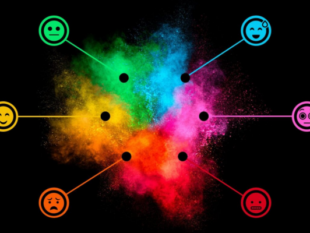How Session Replays Uncover UX Issues That Metrics Miss: Understanding Session Replays And Why They Matter
by Arnab Dey Marketing 27 May 2025

Analytics platforms give you numbers—bounce rates, time on page, and exit rates, but they do not tell you the cause behind the phenomenon.
Developers and organizations need to understand what session replay is and how it can help to understand behavioral patterns.
Session replays take it a step further by allowing you to see what users actually do on your website.
These replays are recordings of real users interacting with your site, showing clicks, scrolls, hesitation, and rage clicks.
Instead of guessing what a high bounce rate means, session replays show you exactly what went wrong.
Hence, it is important to understand what session replay is and how it can help to
Session Replays help in the process of uncovering UX pain points, as they cannot be understood with traditional data only.
Website developers must take several factors into consideration, and session replays can help them understand them all.
Hence, web developers must consider everything when analyzing the problem. The problem might be as simple as a slow-loading button, a vague Call-to-Action, or even a distracting element.
Minor problems like the ones mentioned above often act as a traffic repellent or barrier on the path to conversion. These details can not be seen in the data shown by Google Analytics.
Here’s more on what session replay is and how it works.
What Is Session Replay? How It Works
Once again, session replay is an analytics technique that helps you record and replay the interactions of users with a website’s application.
This is how it works.
1. Identifying Friction Points In Real Time
Session Replay enables teams to identify recurring patterns of confusion. This analysis is based on the behavioral aspects identified through patterns of scrolling, clicking, and other actions.
Users can often be seen hovering over a non-clickable element while expecting it to redirect them to what they want.
Designers and developers should find scope for change in these places.
Users often leave a form while filling it out because they are unwilling to provide details that they do not want to share with the website. But the form shows it to be mandatory in such cases, and it is important to make changes.
While understanding what session replay is, you now know where the drop-off is happening.
These insights are particularly helpful for product managers and UX designers trying to improve conversion paths. When you can identify where and why users hesitate or exit, you’re in a better position to fix it quickly.
2. Beyond Numbers: Building Empathy With Users
Session replays also humanize your data. Watching a visitor struggle to navigate your checkout flow makes it more urgent to fix than simply noticing a 72% cart abandonment rate.
You’re not just dealing with statistics—you’re observing a person trying and failing to complete a task.
That shift in mindset is powerful. It brings teams together—marketing, design, product, and dev—around a shared understanding of what the user is going through. It fosters collaboration, and more importantly, it ensures your optimization efforts are rooted in real-world behavior.
3. Prioritizing Fixes With Heatmaps and Replays
Developers should pair session replays with a website heatmap. This gives you a dual view of where people click and how they behave.
While heatmaps aggregate data across many users, showing high-click areas and scroll depth, session replays fill in the story behind those trends.
For example, a heatmap might show lots of clicks on a particular image.
Session replays help identify the difference between clicks that are due to confusion and those that result from genuine engagement.
Developers use them together as these tools help you prioritize improvements based on both volume and severity.
You can fix widespread but minor issues highlighted by heatmaps while also tackling deeper usability problems revealed in replays.
4. Improving Conversion Funnels Through Micro-Interaction Insights
Session replays provide micro-level visibility, which is especially useful in multi-step funnels.
Let’s say your site has a four-step signup process. Analytics may show a drop-off between steps two and three, but it is not the reason.
Replays show users encountering unexpected pop-ups, struggling with mobile responsiveness, or experiencing glitches in form validation.
These small but meaningful insights allow you to test smarter. Instead of guessing with A/B testing ideas, you test things that users have clearly struggled with.
That dramatically increases your chances of improving conversion rates without wasting dev hours.
5. Session Replays In Agile And Product Workflows
Product teams working in agile sprints can incorporate session replay reviews into retros or planning meetings.
Watching just a handful of sessions each week can reveal bugs, design flaws, or unexpected user behavior that wouldn’t otherwise be identified in a backlog.
It’s an easy way to stay close to the customer without a formal research study.
For e-commerce teams, session replays are particularly useful around promotions, launches, or major site changes.
When something isn’t converting, session replays can quickly tell you whether the issue is with messaging, layout, or usability.
When Not To Rely On Session Replays: Understanding What Is Session Replay
While powerful, session replays aren’t a silver bullet. They should be part of a broader UX toolkit that includes surveys, usability testing, and quantitative analytics.
You can’t—and shouldn’t—watch every replay. Instead, use them strategically: filter by sessions with low engagement, high bounce rates, or failed conversions to find where it’s worth diving deeper.
Also, ensure you’re protecting user privacy. Blur out sensitive fields, and don’t record password inputs or personal data. The goal is to enhance the experience, not disrupt it.
What Is Session Replay? Wrapping It Up
The Website developers check for the traffic, but that is just the result; it is important to know the cause of such a result.
People explore different websites in different ways. Hence, developers need to understand the behavioral patterns of their audience.
Developers, writers, makers, SEO professionals, and every other professional working behind a website must have an idea of the behavioral pattern.
While numbers are important, the reasons behind those numbers are even more crucial for understanding the behavioral patterns, and Session Replay enables us to comprehend those patterns.
Developers and creators of websites should use session replay to understand the behavioral patterns of people, and it must not be used to invade people’s privacy.
Organizations must not misuse something that can be a nice tool for the betterment of performance.
Read Also:


































































































